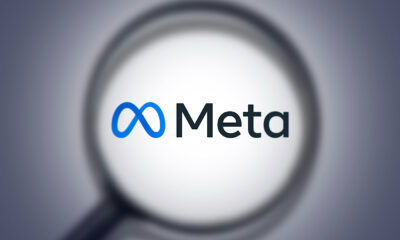“The first things we always want to think about in the customer journey are what the customer is doing and how they are interacting with us as a brand,” said Ben Tepfer, senior technical evangelist at Adobe, at our MarTech conference. “As marketers, we need to be thinking about what the channels look like today and what the channels are going to look like in the future.”
He added, “Customers demand experiences that are consistent and personalized across every one of these channels.”

The days of the traditional customer journey are long gone. Now, brands are responsible for delivering messages of value across multiple platforms, devices and channels. Without a personalization strategy in place, these companies will have a difficult time attracting and retaining customers.
“There’s a financial benefit for you as an organization when you start thinking about personalization,” he said. “It takes more effort in some cases, but it has a greater return on investment.”
Here are some effective ways marketers can leverage personalization in their customer messaging efforts.
Equip your team for great conversations
Your marketing team needs as full of a view as possible of a customer to deliver high-quality communication. Bring them into the loop by providing customer data and insights from your various platforms.
“You need a view of the customer that’s tied across sales, service, support, etc.,” Tepfer said, “Then you can personalize the journey.”
But data is just one piece of the puzzle. Conversations are a two-way street, and brands need effective technologies that create foundations for ongoing high-quality customer messaging .
“You need the technology to be able to execute this,” he said. “You need technology that acts and listens in real-time, that follows through with customer engagements, and that lets customers drive their conversations.”

Practice active listening with customers
“We have to remember that the customer journey is the customer’s journey, not us marketers’,” Tepfer said. “And it’s not always going to be good. Sometimes something happens that’s not ideal.”
Paying attention to these discrepancies in the customer journey is vital to understanding their needs. But more than that, active listening calls for action on the brand’s side that addresses the concern.
“The most important thing is responding to them,” he said. “We need to be reactive and conversational in the way that we talk to our customers.”
Produce conversations of value
“If you’re not delivering value, then you’re not succeeding,” said Tepfer. “It’s about centralizing decisioning so that you can make great decisions about what the best experience is right now and what the best experience is going to be down the road. It means responding at the right time and on the right channels.”
“It’s important that you have a technology framework that lets you adjust in real-time because that’s how your customers are interacting,” he added.
While customer data, insights and active listening provide the foundation for personalized messaging, brands need technology solutions to prove what they have to offer is valuable. Marketers may consider using customer experience platforms to deliver these real-time communications.
“When you have all these foundational pieces together and you’re responding and delivering value, that’s when you’re able to deliver experiences at scale that are highly personalized,” Tepfer said.
He added, “We can think about one-to-one journeys all day, but we also need to think about how we scale and bring those forward.”
Customer journey analytics: A snapshot
What it is. Customer journey analytics software lets marketers connect real-time data points from across channels, touchpoints and systems, allowing users to gain insights into the customer journey over time. This allows marketers to explore the customer journey using data.
Why it’s hot today. Businesses know they need to be customer-focused in each aspect of their marketing operations. As a first step, brands need to understand how consumers are finding them. Whether it be via search, advertisement, or word of mouth, the medium used will set the trajectory for the rest of their journey.
Meanwhile, the average person uses many devices to access the internet, and Cisco forecasts that the number of devices connected to IP networks will increase to more than three times the global population by 2023. With so many devices, people shift back and forth depending on the task at hand and their current environment. Consumers and business buyers turn to an average of nine channels to browse product inventory, look for advice, and make purchases.
Capturing their interactions post-discovery, such as communication with a call center or visit to a retail outlet, helps brands see which of their assets are helping them along their path. What’s more, brands need to know what those who convert do post-purchase–this information helps companies win repeat business and encourage customer advocacy. Customer journey analytics tools do just that.
What the tools do. The majority of vendors offer one or more of the following capabilities to give marketers an understanding of the customer journey: data gathering from a wide variety of channels and touchpoints; analysis using artificial intelligence and machine learning, and customer journey visualization.
Many vendors also offer customer journey orchestration (CJO) capabilities, which allow users to act upon the insights and actually deliver the next step in the customer journey in real-time.
Why we care. Customers expect to have consistent experiences at each of these touchpoints. They want personalization, a trend that continues to grow. Tools like customer journey analytics software give brands the ability to gain insights from their audience and act on them.
Read Next: What is customer journey analytics and how are these tools helping marketers?





















You must be logged in to post a comment Login